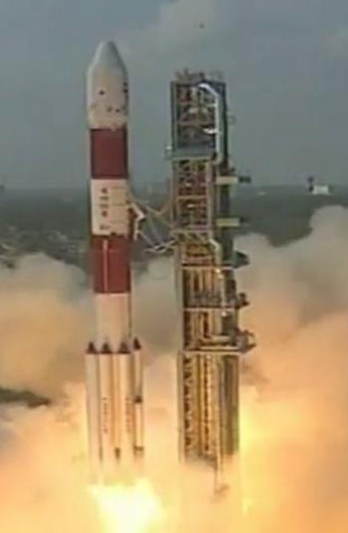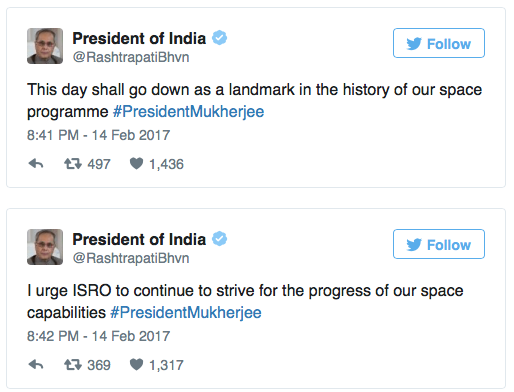
ISRO’s PSLV C37 lifts off from Satish Dhawan Space Center in Sriharikota on February 15, 2017, making this the launch vehicle's 39th journey to space.
Picture a balloon salesman in an amusement park with 104 various color balloons and their attached strings. A child wants one of the red balloons and the balloon man must retrieve the very balloon that the child is indicating he wants and not get the strings tangled or let the whole bundle of balloons fly away. Now imagine what must transpire for a successful launch of this magnitude with 104 satellites. It's a new record, and today Wednesday, February 15, the Indian Space Research Organisation (ISRO) accomplished what has never been done before with their successful launch of 104 satellites from the Satish Dhawan Space Center in Sriharikota, Andhra Pradesh. This was their first mission of the year, and now we wonder what's next?
The PSLV-C37/Cartosat2 Series satellite mission included the primary satellite (Cartosat-2) and 101 international nano satellites. It also launched two of its own nano satellites, INS-1A and INS-1B. Prime Minister Narendra Modi and President Pranab Mukherjee congratulated the space agency for the historic event that significantly boosts India’s space program. It was necessary to use ISRO's most powerful rocket, XL Variant that was previously used in Chandrayaan and during the Mars Orbiter Mission (MOM) for this record-breaking launch.
The order of the PSLV mission is the 714 kg Cartosat-2 Series satellite for Earth observation, followed by the INS-1A and INS-1B, after it reached the polar Sun Synchronous Orbit. Following that the 103 co-passenger satellites were launched, together weighing about 664 kg, in pairs.
Today's achievement is well ahead of the next record holder that was the Russian Space Agency which launched 37 satellites in 2014. Also in June of 2015 the US space agency NASA launched 29, while ISRO in the same month and year as the US successfully launched 20 satellites in one go.
Some of the satellites in the PSLV vehicle include the 714 kg-Cartosat 2 for Earth observation and 103 smaller ‘nano satellites’ which weighed a combined 664 kg. In total, the entire launch carried a satellite mass of about 1,378 kg.
Of the 101 co-passenger satellites, 96 of these belong to USA, and one each are from ISRO’s international customers Israel, Kazakhstan, Netherlands, Switzerland and United Arab Emirates.

Encouraging tweets from the President of India.
Two of India’s nano satellites, INS-1A and INS-1B, weighed about 30 kg.
The nano-satellites belonging to international customers were arranged to be launched through Antrix Corporation Ltd (ANTRIX), the commercial arm of ISRO.
Cartosat-2 Series, the primary satellite has a mission life of five years, is similar to the earlier four satellites in Cartosat-2 Series. The Cartosat satellites are being launched to provide remote sensing services. Images sent by it will be useful for coastal land use and regulation, road network monitoring, distribution of water and creation of land use maps, among others.
The two Indian nano satellites INS-1A and INS-1B were developed as co-passenger satellites to accompany bigger satellites on PSLV. The primary objective of INS (ISRO Nano Satellite) is to provide an opportunity for ISRO technology demonstration payloads, and provide a standard bus for launch on demand services. The INS-1A carries Surface Bidirectional Reflectance Distribution Function Radiometer and INS-1B caries Earth Exosphere Lyman Alpha Analyzer as payloads.

